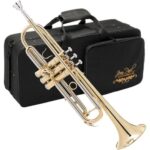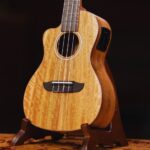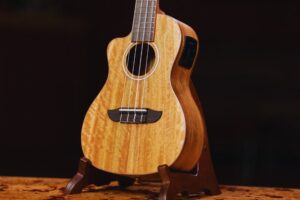While both cornet and trumpet belong to the family of brass instruments, they have significant differences. At a glance, it’s impossible to tell them apart. However, if you examine closer, you will realize that they are not the same in many ways. So, what are the differences between cornet vs trumpet?
Horn instruments have been around since ancient times. Through the years, they have evolved into the trumpets and cornets that we know today. For the uninitiated, they might look and sound the same. But upon closer examination, you’ll see their differences, such as in terms of construction and sound production.
The table below summarizes some of their similarities and differences:
| CORNET | TRUMPET | |
| History | 17th-century | 18th-century |
| Material | Brass | Brass |
| Valves | Three, piston | Three, piston |
| Mouthpiece | Deep, V-shaped | Shallow, U-shaped |
| Bell | 4.5-inch, one-piece, or two-piece | 4.5-inch, one-piece, or two-piece |
| Bore Shape | Cylindrical | Conical |
| Sound | Piercing and bright | Soft and warm |
| Genre | Military band, brass bands | Solo, jazz bands, rock bands |
Read on to learn more about cornet vs trumpet, and I will help you decide which one is a better option for your needs and preferences.
Also, we hope you find the links here useful. We may get a commission if you purchase something through a link on this page, so thank you!
Cornet vs Trumpet
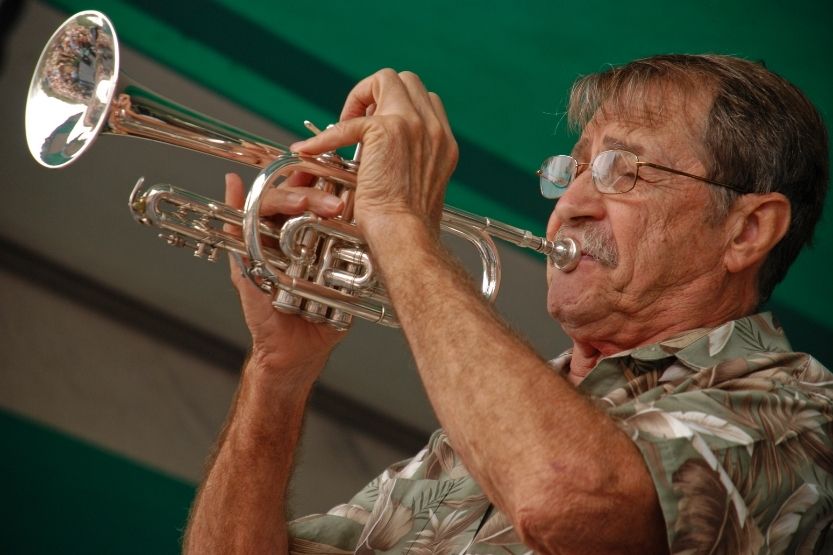
Are you having a hard time deciding what to choose between the cornet and trumpet? Clueless about what makes them similar or different? This section will give you a glimpse of some of their characteristics so that you can pick the musical instrument for you:
1. History
Cornet and trumpet differ in history. Between the two, the trumpet came first. Horns have been around since 1500 BC, specifically in Scandinavia, China, and Egypt.
As early as 300 BC, an ancient painting of the Moche people from Peru showed the trumpet. Nonetheless, it was only in the 17th-century when trumpets were used as musical instruments.
The early versions of a trumpet have a simple design. It has a flared bell, and the user can generate only limited sounds. Aside from the lip movements, the variations in sound are created by changes in breathing speed. The trumpets are tuned differently, which will allow playing songs with different keys.
In 1810, the valve was invented. It changed the way the trumpet was played. Nonetheless, many of its makers were initially slow in the implementation of valves. This resulted in the development of the cornet in the 1820s.
2. Material
Click here to see this Tristar Cornet + Case + MP + Mute on Amazon.
Like with other instruments, looking at the material is important when choosing a trumpet or cornet. This is indicative of the overall performance and quality of the instrument. Not to mention, it also influences weight and comfort and the sound that it generates.
While the two instruments have many differences, they also share similarities, and one of such is when it comes to the material. In this case, brass is the most popular. It is an alloy of zinc and copper, the preferred material for making wind instruments. More than being a breeze to work with, brass is also aesthetically pleasing and rust-resistant.
3. Valves
Click here to see this Mendini By Cecilio Bb Trumpet on Amazon.
When you look at the build of these wind instruments, the valves are amongst the first parts you will notice. One of the similarities between the two is that they both come with three valves.
This also means that the position of the fingers is the same when you are playing either instrument. So, if you already play the trumpet, you won’t have a hard time playing the cornet and the other way around.
Aside from both having three valves, cornets and trumpets are also similar because they both have piston valves. This is unlike French horns that come with rotary valves. The piston valves are moving up and down for sound production.
4. Mouthpiece
Click here to see this Eastar Bb Standard Trumpet Set for Beginner on Amazon.
As the name implies, the mouthpiece is the part of the wind instrument where you will be positioning your mouth. You might not notice it, but the two have slightly different mouthpiece shapes. The shape is designed in such a way that it complements the timber that the instrument can produce.
In a cornet, the mouthpiece has a deep V-shaped cup. The throat is wider and shorter. As a result, air will be passing through smoothly. This is also the one that is responsible for the creation of a deeper and richer sound.
On the other hand, a trumpet has a U-shaped mouthpiece. More so, it is long and slightly narrow as it reaches the throat. It results in a sharp air direction to the trumpet, which generates a clear tone and strong vibrations.
5. Bell
Click here to see this Jean Paul USA TR-330 Standard Student Trumpet on Amazon.
The bell is the flared part of the cornet and the trumpet. This is where the sound comes out, which makes it largely influential in the overall musical production. Both the wind instruments we are talking about in this article will often have 4.5-inch bells.
Aside from the size, another common denominator is that they have two types of bells. It can be one-piece or two-piece. The latter is a reference to the pieces of brass or any other material, which you will find in the bell of the instrument.
It is more common for beginner-friendly wind instruments to have a two-piece bell. Meanwhile, higher-end models often have a one-piece bell, which is also more difficult to manufacture.
6. Bore Shape
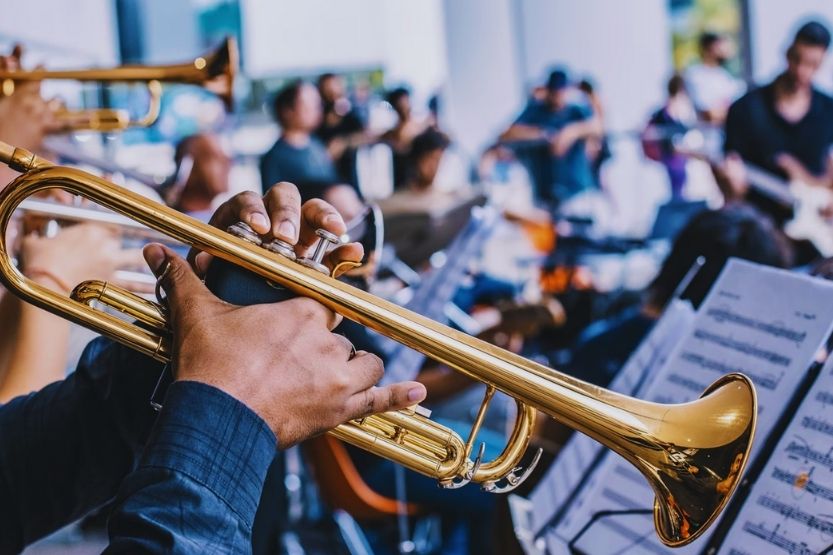
In wind instruments, the bore is the interior chamber. It is the part responsible for air travel. The latter sets into vibration to generate sounds. The timber of the instrument will largely depend on the shape of the bore, making it a crucial consideration.
A trumpet comes with a cylindrical bore. This means that its diameter is constant from the start to its end. Nonetheless, the tip slightly widens since it leads to its bell.
On the other hand, a cornet has a conical bore. Rather than having a constant width, the bore starts narrow and widens as it gets halfway through and widens significantly until it reaches the bell of the cornet.
7. Sound
With the different bores, the shape comes to variations in sound. While they might seem the same from the outside, you will notice that they sound differently if you listen closely when the instruments are played.
The cylindrical bore in a trumpet makes it generate a high-frequency, piercing, and bright sound. Meanwhile, the conical tube of a cornet is the one that is responsible for its soft and warm tone.
Speaking of sound, another important thing to note is that the cornet comes with two keys. The first is a Soprano Eb, which is high. The second is a lower key, which is the Concert Bb. Some would switch between keys if they were playing a full range.
It is also important to note that the sound and timber can vary depending on the material. For instance, in brass cornets and trumpets, the ratio of zinc and copper will decide how the timber comes out.
8. Genre
The differences in the sound that the two wind instruments create also mean that they are used for different musical styles. For instance, it is more common for a trumpet to be played in a jazz band. It is more popular as a solo instrument. A lot of 20th-century composers have written solo pieces and concertos for a trumpet. It is also common in rock bands.
Meanwhile, a cornet is less popular than a trumpet, so that you can see it in fewer genres. You will often see them in the following:
- Military,
- Brass, and
- Concert bands.
More so, it is a favorite of young musicians or those who are only starting to learn the fundamentals of playing wind instruments.
Watch this short video to know more about the differences and similarities between the two instruments.
Tips and Tricks for Using Cornet and Trumpet
Especially if you are a beginner, using a cornet and trumpet can be overwhelming. This section walks you through some of the most important things to do:
1. Avoid Having Sweets Before Playing
Avoid having chocolates, sweets, candies, and any sugary drinks or food before playing the instrument. They can clog the mouthpiece, which will negatively impact the overall performance and durability.
2. Learn Proper Playing Position
Learn the proper positioning so you can play more comfortably. Keep your chin flat and the corners firm. Your teeth should be apart, which should be approximately the same width as the shank of the mouthpiece. Slightly curl your bottom lip and do not puff your cheeks.
3. Master Proper Breathing
Proper breathing is one of the most important techniques that you will need to learn. Full and deep breaths are crucial. Avoid lifting your shoulders when you inhale. Stay as relaxed as possible. The more nervous you are, the harder it will be to breathe. It is also vital to maintain the proper posture and loosen up when holding the instrument.
It does not matter whether you play with wet or dry lips. It all boils down to personal preference. The more important is to experiment and choose which one you are more comfortable with.
4. Make Practice a Habit
Practice makes perfect. Start a solid routine and stick to it. Discipline is crucial for your improvement. Find a mentor or watch videos online. Try to find as much time as possible to dedicate to your practice.
Care and Maintenance of Cornet and Trumpet
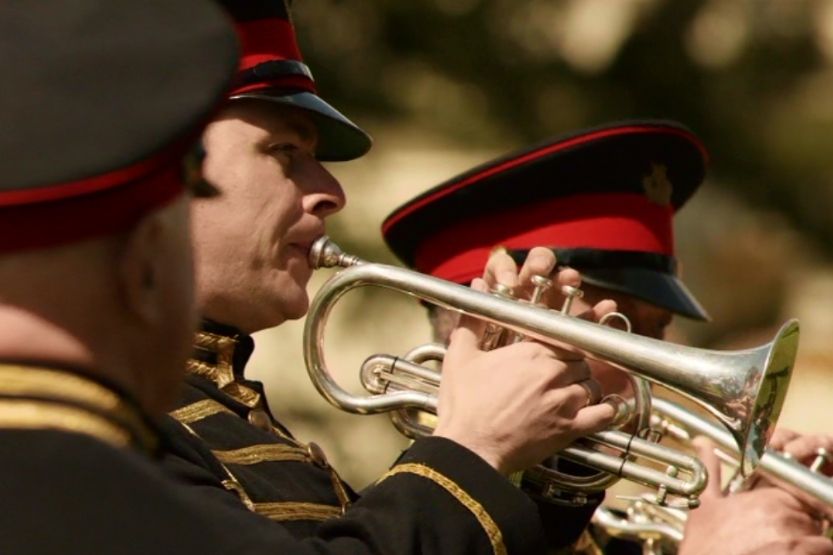
Whether you have a cornet or a trumpet, proper maintenance is important. This will keep the instrument in its peak condition. That said, below are some of the most important things to do:
1. Lubricate Your Instrument
Lubricate the valve oil to maintain smooth movements. Loosen the cap screw of the casing and slowly extract the valve. Apply up to three drops of oil and retighten the screw.
2. Clean the Instrument Before Returning It in the Case
Clean the instrument before keeping it in the case. In most cases, it is enough that you wipe it with a clean and non-abrasive cloth. The failure to get rid of dirt before storage can speed up wear.
3. Keep It in a Hard Case
Pay attention to proper storage, especially if you won’t use the instrument for a long time. The best practice is to keep it in a hard case. Protect it against dirt, heat, moisture, light, and other external factors resulting in irreversible damage.
4. Wash Your Instrument at Least Every Few Months
At least every few months, the cornet and trumpet will need a proper bath. Start by filling a container with mild soap and warm water. Submerge half of the instrument. Take off the removable parts and clean them individually while leaving the instrument soaked for at least 20 minutes. Use a brush to clean them thoroughly. Rinse, dry, and reassemble.
To keep your instrument in its best condition, consider the tips mentioned in this video.
Conclusion – Cornet vs Trumpet
While both have been around since ancient times, it is believed that trumpets came first before hornets. These wind instruments share many similar characteristics, such as using brass as the main material, the presence of three valves, and having a 4.5-inch bell that can either have one or two-piece construction.
Meanwhile, they are also different in more ways than one. For instance, a cornet has a cylindrical bore shape responsible for its piercing sound and high pitch. On the other hand, a trumpet has a warmer and softer tone, which we can partly attribute to its conical bore shape.
Related reading:
Flugelhorn Vs Trumpet – What Is the Difference Between Them?
Trumpet Vs Trombone – What Is the Difference Between Them?
Jean Paul FH-430 Flugelhorn Specs and Review








